In this article, we take a look at what the RIPE NCC's data shows us about Serbia. We also take the chance to look at how it compares on a number of factors to its neighbours in South-East Europe.
This week, the RIPE NCC is hosting a member lunch in Belgrade, so what better time to take a look at a country in the heart of the South-East Europe region. We also use four of the countries situated around Serbia to give some comparison points on how it is doing. The countries chosen to compare with Serbia are those not covered in previous country focus articles such as the one on Hungary.
You can also look at much of the data for yourself and compare Serbia with other countries using the RIPEstat Country Reports tool, which provides stats on LIRs, IPv4 and IPv6 for every country in our service region.
In the table below, you can see geographic and demographic information for the countries we look at. Figures for area and population are from Wikipedia.
| Country | Population | Area (km2) | LIRs |
|---|---|---|---|
| Serbia | 7,040,272 | 77,474 | 96 |
| Croatia | 4,154,213 | 56,594 | 64 |
| Bosnia and Herzegovina | 3,511,372 | 51,209 | 43 |
| Bulgaria | 7,101,859 | 110,879 | 177 |
| FYROM | 2,073,702 | 25,713 | 36 |
Please note that this article, unless otherwise noted, shows a snapshot of the situation as seen on 22 February 2018. However, in most cases we also provide a link to the most up-to-date information.
Countries at a Glance
| Country | Serbia | Croatia | Bosnia and Herzegovina | Bulgaria | FYROM |
|---|---|---|---|---|---|
| Number of ASNs assigned | 189 | 132 | 43 | 724 | 50 |
| Number of Local Internet Registries | 96 | 64 | 43 | 177 | 36 |
| Number of IPv4 allocations | 224 | 131 | 136 | 795 | 224 |
| Number of IPv4 assignments | 100 | 61 | 7 | 250 | 11 |
| Number of IPv4 addresses allocated | 2,050,304 | 2,146,048 | 795,648 | 4,261,888 | 694,272 |
| Number of /22s allocated from the last /8 | 76 | 51 | 35 | 164 | 34 |
| Number of IPv6 allocations | 64 | 44 | 32 | 152 | 32 |
| Size of IPv6 allocations (/32s) | 277 | 183 | 130 | 743 | 175 |
| Number of IPv6 assignments | 7 | 7 | 0 | 31 | 0 |
| RPKI with route object authorisation (ROAs) | 16 | 14 | 9 | 35 | 5 |
Membership Growth
In Figure 1, you can see the growth of the number of Local Internet Registries (LIRs) in Serbia, Croatia, Bosnia and Herzegovina, Bulgaria and the Former Yugoslav Republic of Macedonia (FYROM). As of 22 February 2018, there are 96 LIRs registered in Serbia.
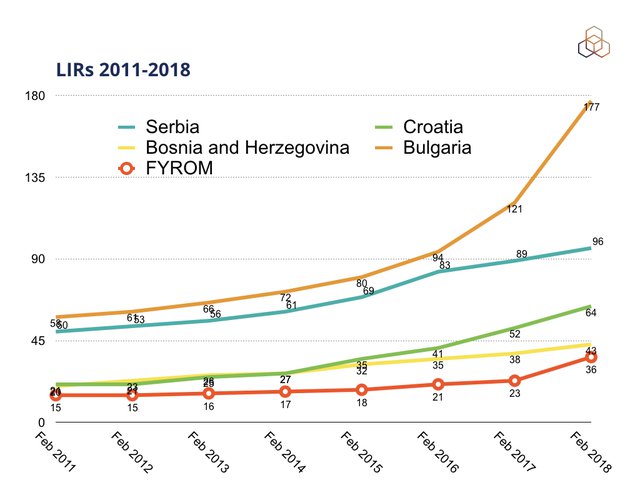
Figure 1: Number of LIRs in Serbia, Croatia, Bosnia and Herzegovina, Bulgaria and FYROM
For comparison, Figure 2 shows the growth in the number of all LIRs registered with the RIPE NCC since 2009. There are currently over 18,000 LIRs registered with the RIPE NCC.
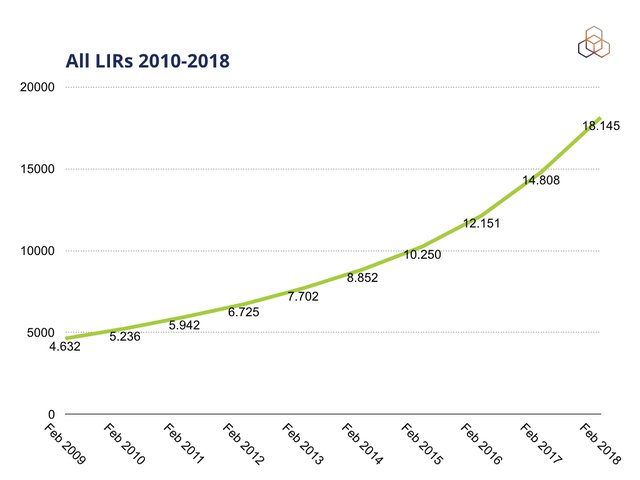
Figure 2: Number of all LIRs in the RIPE NCC service region from 2009 - Feb 2018
As an interesting data point, we can also look at the number of LIRs that have closed in Serbia and surrounding countries since 2011. The chart below gives the cumulative figures, so we can see that only four LIRs have shut down in Serbia in the past seven years. There is a similar stability in the figures for neighbouring countries - Bulgaria shows more closures but it also has quite a few more LIRs.
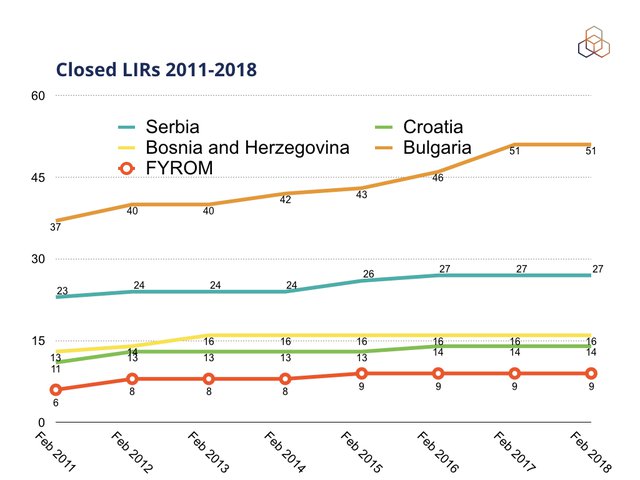
Figure 3: LIR closures in Serbia and neighbouring countries
The next figure shows the age of the LIRs in Serbia. You can see that 13 LIRs have joined the RIPE NCC in the past two years, while the biggest grouping of Serbian LIRs is those who are ten years or older. This is not reflective of the overall trend in the RIPE NCC service region, where new LIRs are by far the largest grouping. You can see the chart for the full service region below in Figure 4b.
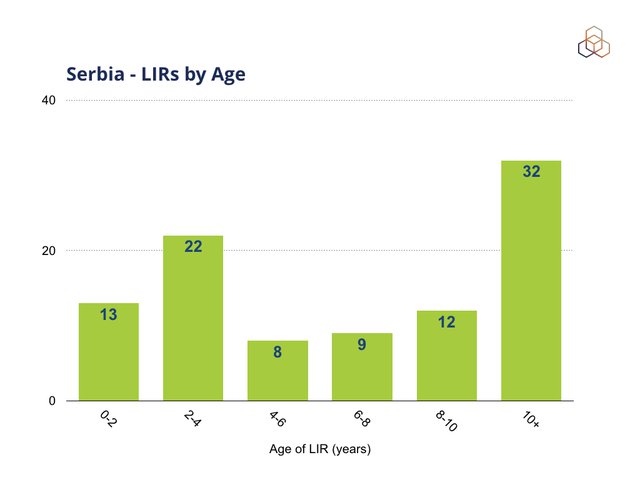
Figure 4: Age of LIRs in Serbia
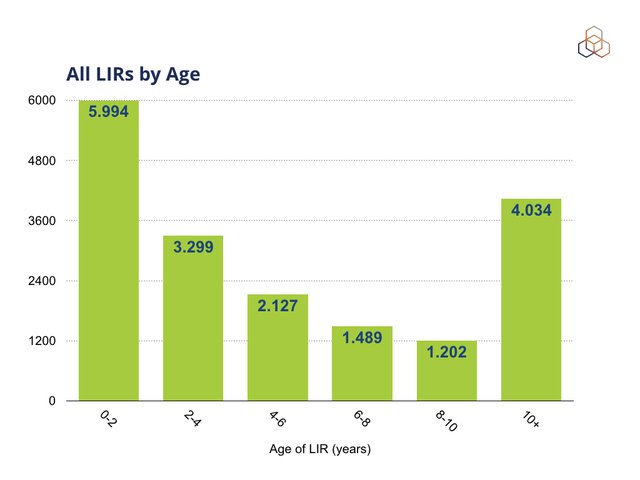
Figure 4b: Age of all LIRs in RIPE NCC service region
IPv6 Deployment in Serbia
IPv6 RIPEness is a rating system that awards stars to LIRs in the RIPE NCC service region depending on indicators of IPv6 preparedness. Stars are awarded for:
- Having an IPv6 allocation or assignment from the RIPE NCC
- Making the IPv6 prefix visibility in the Routing Information Service (RIS)
- Having a route6 object registered in the RIPE Database
- Having reverse DNS delegation set up for the IPv6 allocation
Figure 5 shows that 39% of LIRs in Serbia have yet to receive an IPv6 allocation from the RIPE NCC, while 31% have received an allocation but have yet to do anything with it.
You can also see from APNIC's IPv6 Capability Metrics that Serbia comes quite low in the raking for IPv6 capability.
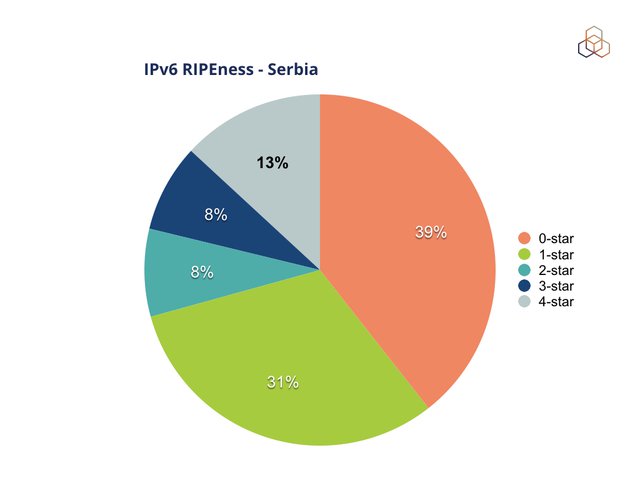
Figure 5: IPv6 RIPEness in Serbia
In Figure 6, you can see the situation for all LIRs in the RIPE NCC service region. 72% of all LIRs have an IPv6 allocation, and around 44% have started using it one way or another (by meeting one of the criteria listed above).
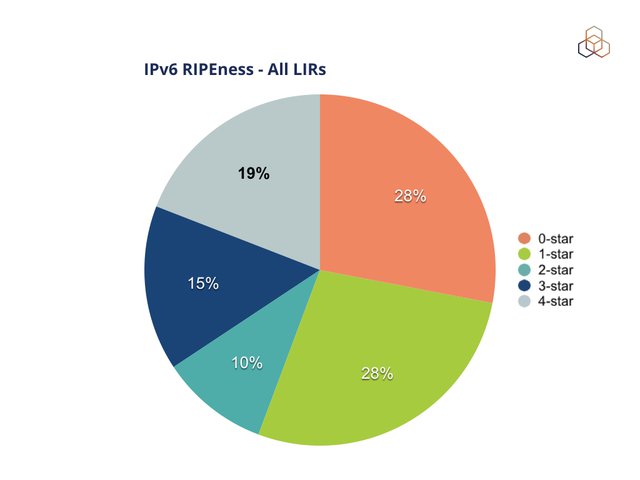
Figure 6: IPv6 RIPEness for all LIRs
In Figure 7, we show the percentage of ASes announcing one or more IPv6 prefixes in Serbia and the countries we compare it with - you can see that only Bosnia and Herzegovina is above the average for the countries we look at here. You can find the current status of these countries using the IPv6 Enabled Networks tool. This tool also allows you to search for other countries or regions worldwide.
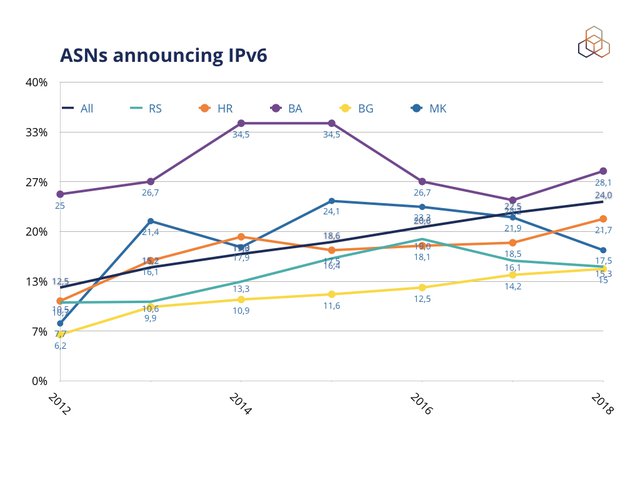
Figure 7: ASes announcing one or more IPv6 prefixes in Serbia, Croatia, Bosnia and Herzegovina, Bulgaria and FYROM
Country Routing Statistics
Figure 8 visualises the development of the IPv4 and IPv6 prefixes and ASes in Serbia over time.
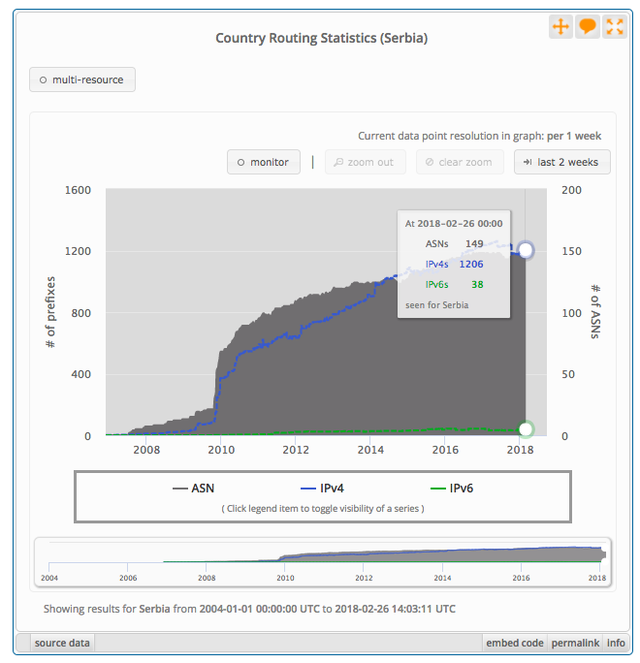
Figure 8: RIPEstat country routing statistics in Serbia
You will notice that the number of IPv4 prefixes and the number of ASNs in this widget are not consistent with the number shown in the table at the top of this article. The table shows those allocations and assignments made by the RIPE NCC to organisations registered in Serbia. The RIPEstat widget on the other hand shows what's actually happening in the real world: The 224 IPv4 allocations made by the RIPE NCC have been de-aggregated into 1,207 individual prefixes that are announced by 149 ASes (instead of the 189 ASes assigned by the RIPE NCC to organisations in Serbia).
You will also notice the sharp increase in prefixes in 2010 for Serbia. This is because Serbia was once part of the Federal Republic of Yugoslavia and then the State Union of Serbia and Montenegro, with country codes YU and CS. Although Serbia continued in its own right from 2006, the RIPE NCC RegIDs did not refect this change until 2010, so to get the full picture you can see the progression from the RIPEstat widget below with the RS, YU and CS RegIDs.
RIPEstat widget will be rendered here
We can zoom in to look at ASes announcing IPv6 and IPv4 more closely. Figures 9a and 9b show the increases since 2010 for both protocols, with the IPv4 trend perhaps unsurprisingly showing a more steady and even rise.
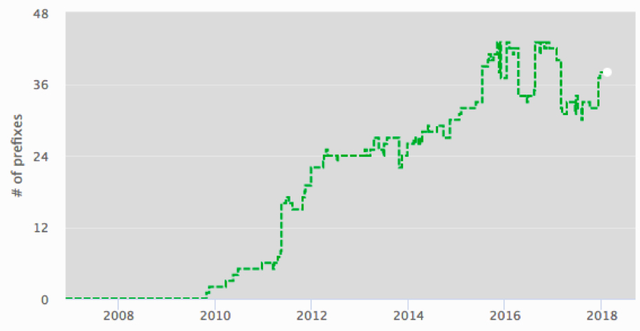
Figure 9a: Number of ASes announcing IPv6
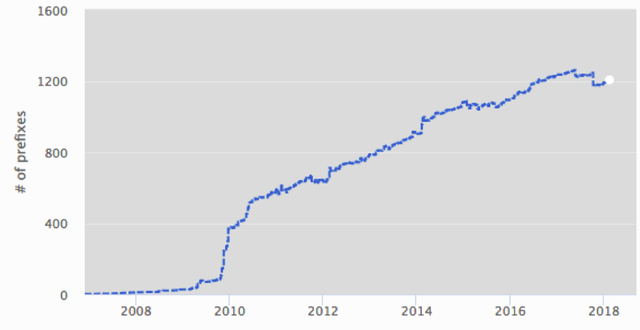
Figure 9b: Number of ASes announcing IPv4
You can see the current status in the RIPEstat country routing widget. You can also use that widget to compare multiple countries.
RIPE Atlas
RIPE Atlas is a global network of probes that measure Internet connectivity and reachability, providing an unprecedented understanding of the state of the Internet in real time. The more probes that are distributed and connected worldwide, the more useful data can be collected that can then be used by network operators and researchers to analyse the state of the Internet.
The embedded RIPEstat widget below shows the number of RIPE Atlas probes in the region. Green dots indicate connected probes, yellow dots show disconnected probes and red dots indicate those that are abandoned (i.e., not connected for more than three months).
If you have a RIPE Atlas probe, please double-check it is connected properly so that the community can benefit from the data it produces.
RIPEstat widget will be rendered here
Figure 10 gives the trends for connected, disconnected and abandoned probes in Serbia. We can see there is a growing number of abandoned probes there.
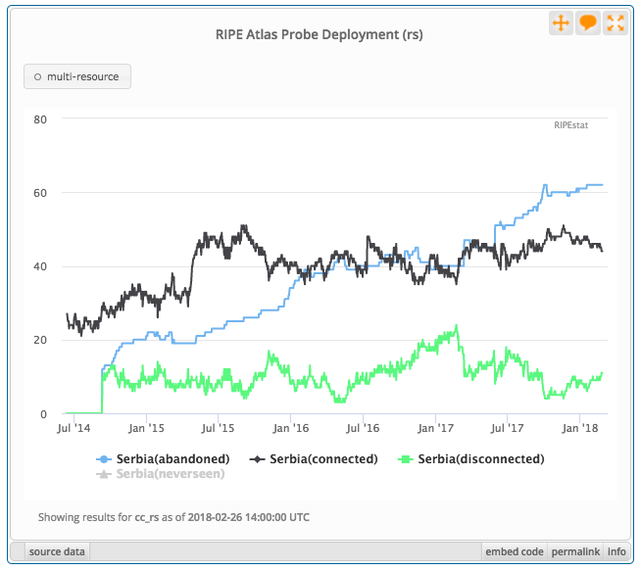
Figure 10: Abandoned, connected and disconnected probes in Serbia
Participation at the General Meeting
The last RIPE NCC General Meeting (GM) took place in Dubai from 24-26 October 2017. This is the forum where, twice a year, RIPE NCC members can register to have their say on how the RIPE NCC operates.
Almost 1,300 members registered for the GM. Of these, eight members from Serbia registered to participate. Figure 11 shows the registration numbers for Serbia since May 2015. The number of registrants has increased steadily over the past three years, although we would obviously like to see a much bigger participation rate from Serbia and the South-East Europe region as a whole. At the upcoming GM in Marseille in May 2018, RIPE NCC members will vote on the RIPE NCC Charging Scheme for 2019 as well as elect people to represent them on the RIPE NCC Executive Board.
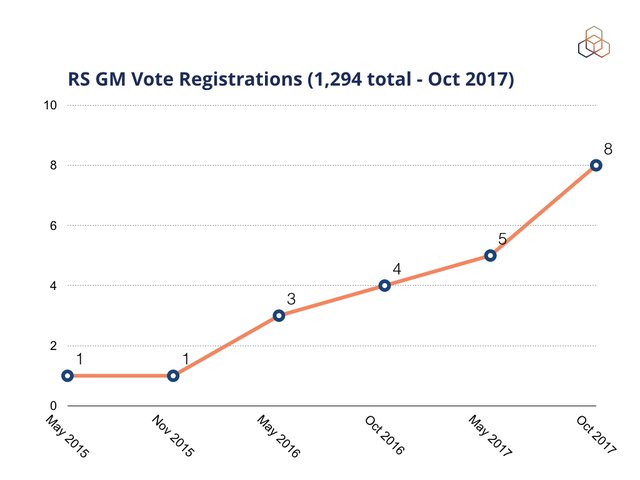
Figure 11: Serbian GM vote registrations
Local Networking Communities
RSNOG has been holding its meetings for the Serbian network operators community since 2015. The last meeting was held in November 2017 and brought together 120 people from a range of organisations in the local community. The RIPE NCC was proud to be able to attend and present a data-driven analysis of Serbia at this event. We recommend that those of you in the Serbian Internet community (and those in neighbouring countries) check the RSNOG wesbite for details on the next meeting. RSNOG also contributed to this recent RIPE Labs article that gives an overview of how NOGs operate in our service region.
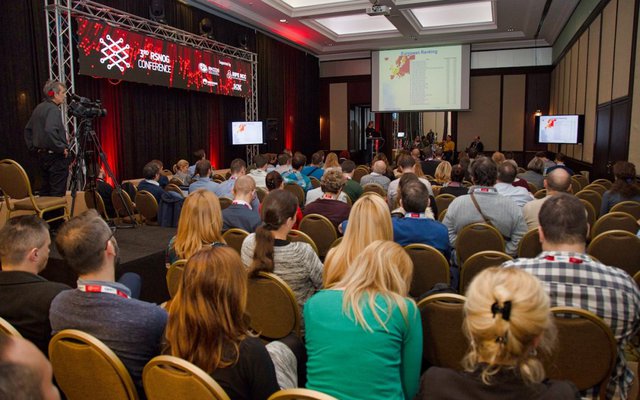
The crowd at RSNOG #3 (photo credit: RSNOG)
Conclusion
In terms of membership development, Serbia has a well-established member base with 96 LIRs offering services and exactly one-third of those being ten years or older. In terms of IPv6 capability, this is an area where this is more room for growth, especially as in the region Serbia has one of the highest head of population-to-allocated IPv4 ratios.
There is now a vibrant local community that meets regularly, and this is something that can only contribute postively to Internet development in Serbia. Take-up for the RIPE NCC Member Lunch in Belgrade was extremely high, and we're looking forward to meeting our members there to see how we can help them to develop as a community and make sure they have the support they need.




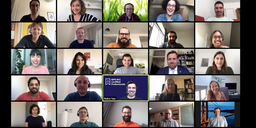
Comments 0
Comments are disabled on articles published more than a year ago. If you'd like to inform us of any issues, please reach out to us via the contact form here.